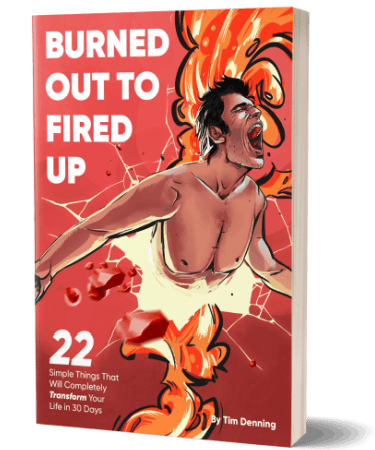However, one skill I have mastered over the last 9 years is how to produce highly shareable writing. I won’t flex stats because you don’t have time for that (click my profile if you must).
Here are the laws I follow to create highly shareable writing that goes viral and builds a huge email list. Copy, borrow, steal.
Law #1 — Short intro
Many writers create epic essays.
But they never get read because they waffle on in the intro like they’re as famous as Martin Luther King. They don’t respect a reader’s time.
The worst part is they provide too much context and dish out more caveats than a lawyer at O.J. Simpson’s murder trial.
Cut your intros right down. Drop readers in the middle of the story. Or just start with a big attention-grabbing point, then get into it. All this performance rehearsal and preparation destroys readers.
Rule: cut the intro by 50%. Then cut it by 50% again.
Law #2 — Write for the reader
A lot of writing is written by selfish a-holes.
They think it’s all about them and their magnificent personal brand. Makes me sick, I tell ya. What I try to do differently is forget about me. You don’t care about my #amazing life or what vegan steak I ate for dinner.
All you care about is what’s in it for you.
If you tattoo this idea on your hand you’ll never forget it. Selfish writing doesn’t get read. Readers want value and that comes from the problems you solve, the stories you have, and the takeaways at the end.
The last one is crucial. If you write non-fiction then always end with a few takeaways. That way, you can’t transcend into the death spiral of selfish writing. Leave selfish writing to the InstaBAM influencers.
Law #3 — Use subheadings as headlines
The best essays have headlines and subtitles.
The greatest essays also have subheadings, too. Pretentious writers hate subheadings. They think they’re clickbaity or only for us dumb-dumb bloggers. They assume you own a magnifying glass and will use it to read tiny words on your phone while admiring their perfect ass.
But highly shareable writing is scannable.
Subheadings let readers scan, see if what you’ve written is relevant, then go back and read it.
If you don’t use subheadings you miss this huge opportunity and join the “On Writing” crowd, who get left for dead and never get their essays read.
Poor babies.
There’s another technique you can use. Write your headline, subtitle, and subheadings. Then see if you can switch out your headline for either a subheading or subtitle. This works like a charm.
Often your original headline is bad. By simply switching the headline for another heading in your essay, you find gold without having to try too hard to get it.
This works because we’re precious about our headlines, but we’re not so fussy about subtitles and subheadings. And when we remove the perfection filter our best sentences come to life.
Headline = Best Sentence
Law #4 — Add personal stories full of crybaby moments
Many essays read like Wikipedia.
They’re full of facts and sound smart, but you feel empty reading them. They could’ve been written by a robot controlled by an AI and you’d never know.
Shareable writing is personal.
It forces the writer to dig deep. Maybe you don’t share all the sensitive moments that made you cry, but you at least use some degree of vulnerability.
A famous writer recently asked me to review their new book.
It’s a work of art. But by the end I didn’t feel like I knew them any better. I sent them an email and said:
“Great book but who the heck are you, man? Where do you come from? Why should I listen to you? Were you religious?”
They wrote a potential best-selling book about an uncommon idea and forgot to put themselves into it.
We buy writers, not writing. Sell your worldview with stories.
Your niche is your worldview.
Law #5 — Write as you talk
I’m a cowboy from Australia.
I live in the desert and handle rattlesnakes in the afternoon. Some days skippy the bush kangaroo hops right past my house and bites me on the leg. If I could have kombucha on tap all day every day, I would (but WeWork went bankrupt…ahh well).
This is how I talk. The way I write is how I sound in real life. Find me on Youtube and you’ll see it to be true.
If you don’t have a writing voice then try the way you talk.
Speak your essays to life and record them with software like Otter. Highly shareable writing sounds unique because the writer’s voice is dialed up all the way. It’s loud.
Read Mark Manson’s “The Subtle Art of Not Giving a F” essay and you’ll see what I mean. AI can’t write the same as you talk, so it’s an insurance policy.
Law #6 — Use active voice
A grammar nerd told me this (Hi, Sean!).
Passive voice sounds weak and hard to read. Active voice is better for 99% of applications. Use the Hemingway App or Grammarly to find passive voice and exterminate it.
Law #7 — Don’t try to sound smart
Experts are a pain in the butt.
If there’s one thing I’ve learned about highly shareable writing, it’s that the new viral writers are average people.
We love reading average people because they’re more like us. And they have less ego and don’t think the sun shines out of their ass.
This is why social media has become the main way we read now. And why old media institutions are dying with their popup ads and fake news. Good riddance.
Average > Expert
Law #8 — One edit only
Many people overthink their writing.
They work on a draft for years, thinking it’s going to be a better read than Einstein’s Theory of Relativity. It’s not.
Your best writing isn’t obvious. The most viral pieces I’ve ever written I never predicted. One trait each essay has in common is I didn’t overthink it. It was often stream of consciousness writing. Unfiltered.
The way to achieve this is to make it a rule to edit once.
You write, edit once, then it’s over red rover. Too much editing starts to become a form of self-rejection. And you being to place gaffer tape over your writer’s voice to silence the fake critics. Don’t do it, it’s a trap.
Edit once.
Law #9 — Get to the point
Most writing is too long. Read that again.
Highly shareable writing gets to the point and saves the reader time. It’s faster to read than the book version that’s all filler, no killer. If you write ten points, remove the three worst.
If your essay is 10,000 words, make it 5000. Be ruthless with cutting out all the words and sentences that don’t convey meaning or add wisdom.
Law #10 — Publish now
The faster you hit publish the quicker you can move on to the next piece.
This is key because the more you write online, the better you get. The goal isn’t to polish a golden nugget until it becomes a turd. The goal is to get your work out into the world and get feedback on it.
It’s to take a new idea and keep writing about it until it becomes wisdom people can’t escape. Shorten the gap between when you finish editing and when you hit publish.
Bonus rule
People love bonuses. Let’s wham, bam, thank you mam these gorgeous laws into a hole-in-one.
Highly shareable writing has what I call attention anchors. These are tweetable sentences, quotes, pictures, and infographics that help to grab attention. These anchors sit in between long paragraphs and complex thoughts to give readers relief.
They give readers an excuse to keep reading.
Use a headline to grab attention, then use attention anchors to retain attention until the end of the essay.
That’s how you increase your read time and convert more readers into raving fans who’ll hit the share button as fast as they can and help you build a massive audience in the process.


